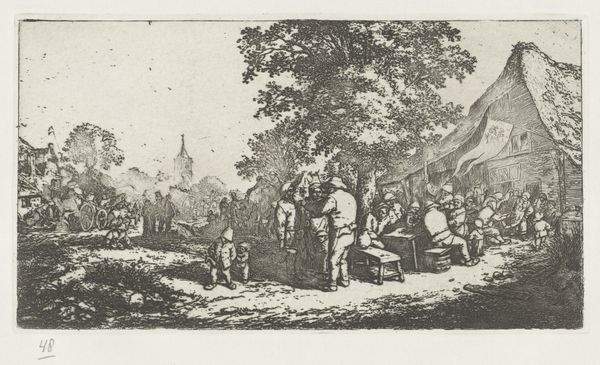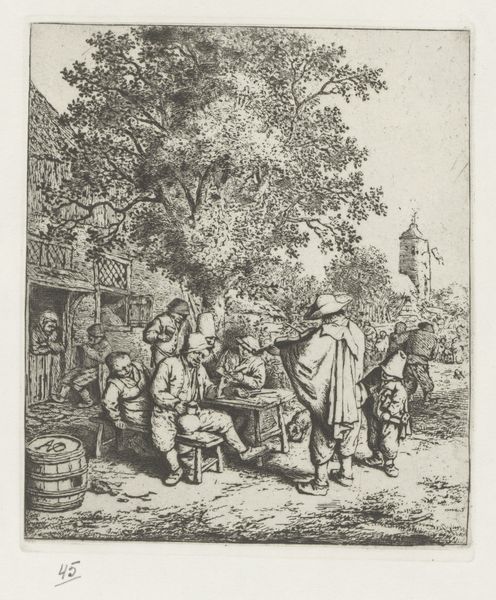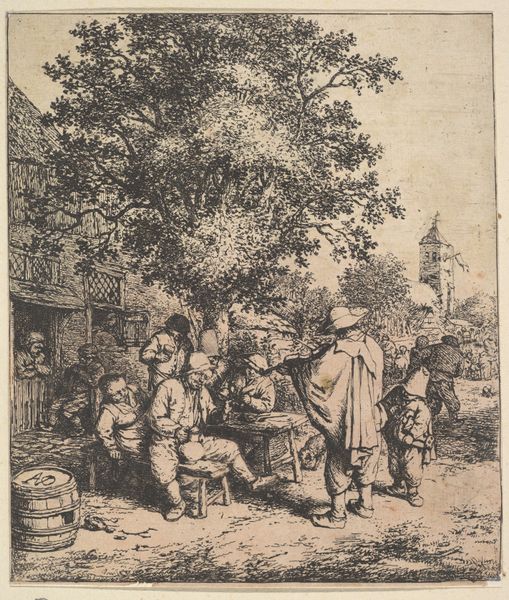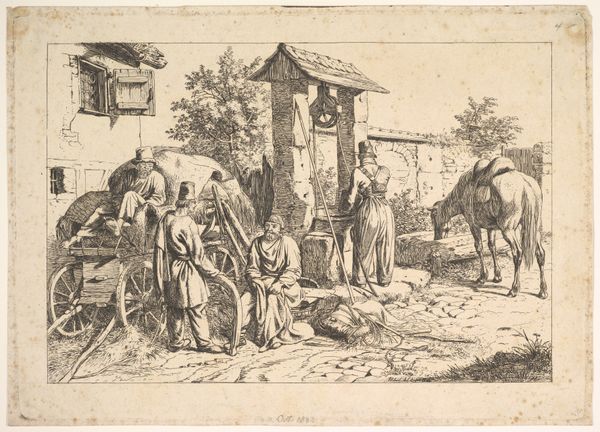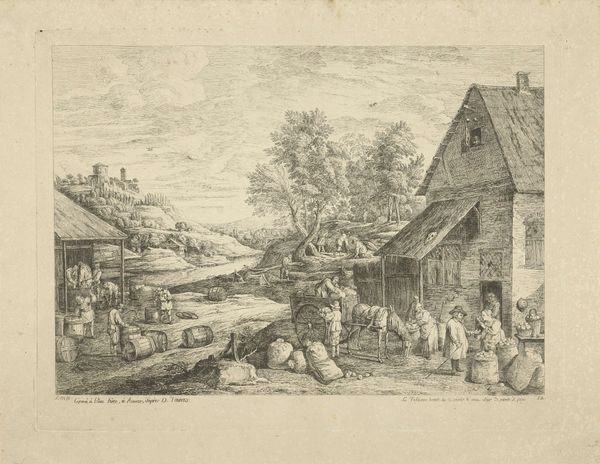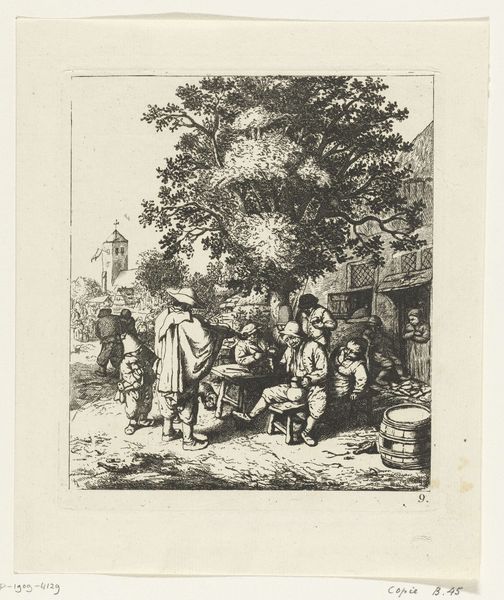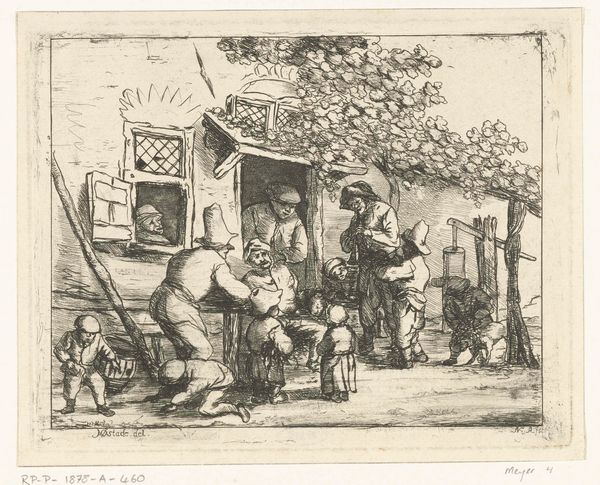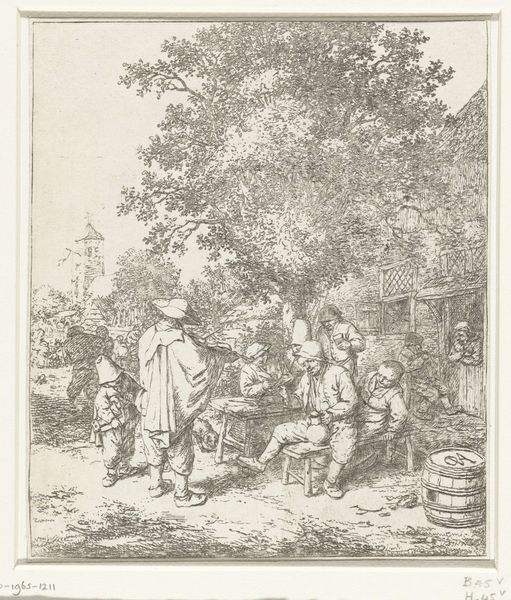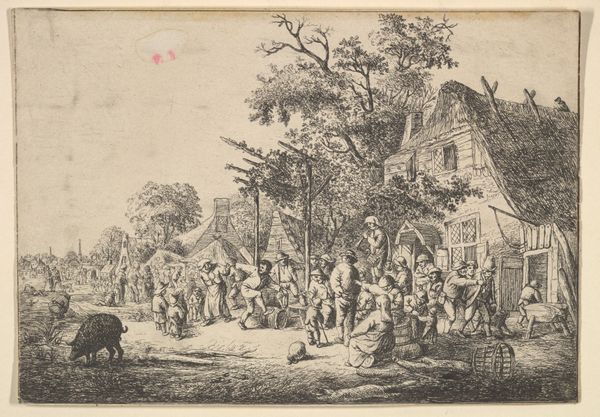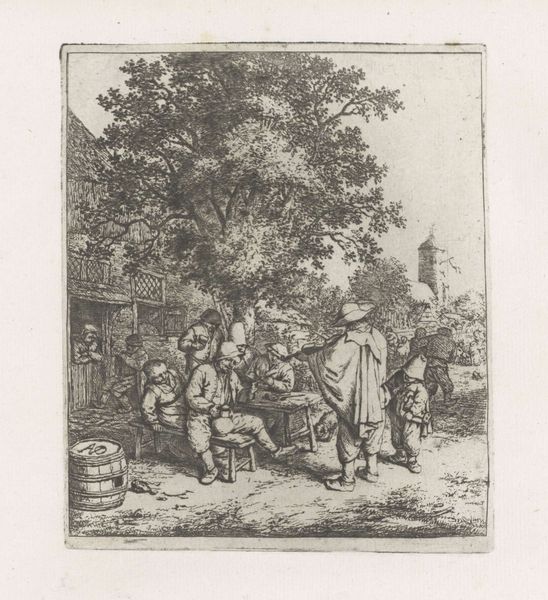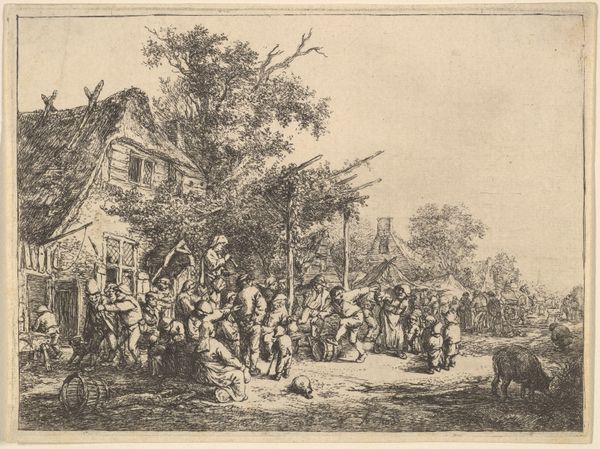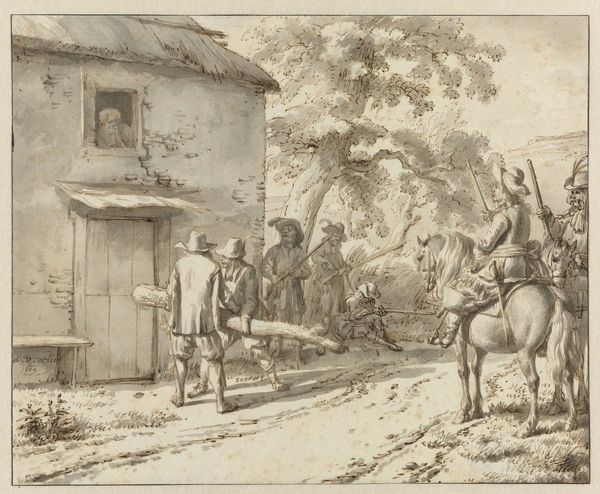
print, etching
#
narrative-art
#
dutch-golden-age
# print
#
pen illustration
#
pen sketch
#
etching
#
pencil sketch
#
landscape
#
figuration
#
line
#
cityscape
#
genre-painting
Dimensions: Sheet: 5 × 9 in. (12.7 × 22.9 cm)
Copyright: Public Domain
Editor: Here we have Adriaen van Ostade’s etching, "The Kermess Under the Great Tree," dating from sometime between 1610 and 1685. It’s bustling, almost chaotic. There’s a real energy in the crowd. How do you interpret this work? Curator: The energy you describe is certainly there, and I think it's crucial to understand what these "kermesses" represented. They were far more than just festive gatherings. Consider them through a Foucauldian lens. Often they served as sanctioned spaces where social hierarchies could be temporarily inverted or challenged. Think of it as a pressure release valve, a moment of collective transgression before the return to everyday social control. Editor: So, the "chaos" is actually quite strategic? Almost a performance? Curator: Precisely. Notice the figures’ interactions. Are they truly free, or are they performing freedom within specific boundaries? Who is allowed to participate fully, and who is marginalized even within this supposedly egalitarian space? Where are the women in positions of power or authority within the scene? Editor: That's a perspective I hadn't considered. It shifts my focus away from just seeing a generic "celebration." Curator: Also, the "Great Tree" itself is interesting, isn't it? In folklore, trees were often symbolic of knowledge, life, and connection. Is van Ostade subtly commenting on the roots—both literal and metaphorical—of this social event? Does it provide shelter and sustenance to all equally? Editor: I see what you mean. It encourages a deeper reading of the social dynamics on display. It’s made me question my assumptions about these historical scenes. Curator: Indeed. By exploring the intersections of class, gender, and ritual within these seemingly straightforward depictions of everyday life, we gain a richer, more nuanced understanding of the complexities of Dutch Golden Age society.
Comments
No comments
Be the first to comment and join the conversation on the ultimate creative platform.
